Catching Up with Giuseppe Dell'Anno
The 2021 winner of the Great British Bake Off talks simple cakes, Italian bakes, and shares a recipe for Torta alle Noci. Plus, a giveaway of his new book, Giuseppe's Easy Bakes.

Welcome to Buona Domenica, a weekly newsletter of inspired Italian home cooking and baking. I’m Domenica Marchetti, journalist, cooking instructor, occasional tour guide, and author of eight cookbooks on Italian cuisine. Looking for a particular recipe? You’ll find all Buona Domenica recipes indexed here.
In this week’s newsletter we catch up with Giuseppe Dell’Anno, “Britalian” baker and winner of the 2021 season of the Great British Bake Off, whom I interviewed last week at the 92nd Street Y, in NYC.
I’m also giving away a copy of Giuseppe’s new book, Giuseppe’s Easy Bakes, just published by Hardie Grant. The giveaway is open to paid subscribers. To enter, just leave a comment telling us about your favorite Italian dolce (sweet). Free subscribers, you can get in on the giveaway by clicking on the green box below to upgrade your subscription. I’ll announce the winner in next Sunday’s newsletter. In bocca al lupo!
EVEN THOUGH I am someone who creates recipes and writes about food for a living, I rarely watch food TV. I think I stopped watching Top Chef after Carla Hall won a half-century ago, and I couldn’t tell you what’s on the Food Network these days—Tennis Channel is more my jam.
There is one exception. My family and I have devotedly watched every episode of the Great British Baking Show (or Bake Off, as it is called in the U.K.), from the days of Paul Hollywood, Mary Berry, Mel, and Sue right up until the finale earlier this month of the 2023 season, with Paul, Prue Leith, and the (not especially funny) comic relief team of Noel and Alison.
In 2021, we all rooted for a tall, mustachioed baker with wild curls and a thick Italian accent, named Giuseppe Dell’Anno. A self-described “Britalian,” Giuseppe has lived in the U.K. since the early 2000s. His creations, or “bakes,” as the Brits call them, were infused with the ingredients and flavors of Italy: coffee, figs, walnuts, orange zest, ground almonds, and amarena cherries. We were happy to see him win, and last year, when his first cookbook, Giuseppe’s Italian Bakes, was published, my family got it for me for Christmas. (His recipe for savoiardi—lady fingers—changed my mind about them.)
Last Sunday, I interviewed Giuseppe at the 92nd Street Y, in New York, where he spoke to an enthusiastic audience about everything from growing up in Gaeta, a small coastal city halfway between Rome and Naples, to his experience competing on GBBO during the height of the pandemic. He even dished a little on Paul and Prue (sorry—you had to be there!) and recounted the moment towards the end of the season when it suddenly dawned on him that the entire crew had been listening to everything he said when he was mic’d up in the tent for all those weeks. “I immediately started replaying every conversation in my head, wondering if I had said something bad or inappropriate!”
Giuseppe grew up in a family of so many accomplished bakers that it wasn’t until he left home as a young adult that he realized this wasn’t the case in all families. “I was so surrounded by people with exceptional skills that when I was a kid I was convinced that it was the same everywhere,” he told the audience. “I never really considered cooking or baking a skill, the way you might not consider reading a skill, it’s just something everybody does.”
His biggest inspiration and influence was his dad, Cosmo (Mimino), who spent decades cooking for a large cruise company, eventually becoming head chef and pastry chef. During our conversation, Giuseppe described how his father would make enormous batches of rich, yeasted babà (savarin) dough, holding a large bowl against his torso with one arm and hand-beating the stretchy mass with his other for 30 to 45 minutes. “You should have seen his bicep,” he said.
There was one skill his father did not possess: “He was an exceptional baker but a terrible teacher. There’s a recipe in my first cookbook for [crunchy] amaretti, and they are very easy because it’s just three ingredients in there: sugar, almonds, egg whites. When I looked at my dad’s recipe, he had the quantity of sugar, and the quantity of almonds, but no quantity for egg whites. I said, ‘Papà, how much egg whites?’ and he said, ‘Well, enough for the texture to be right.’”
Later, Giuseppe understood the value of this message, of looking for cues and using intuition in baking. But at home, where he was surrounded by cakes and trays of cookies, he didn’t really need to hone his baking skills. When he moved to Pisa, and then England, to study engineering, he found himself missing his family’s sweets. “I was missing all the weekly cakes that I would get for free,” he said. “I said, I’m going to have to start doing it myself.” He’s been baking ever since.
During his weeks competing in “the tent,” Giuseppe discovered that his Italian flavors appealed to the hosts and judges. “Whatever I proposed on the show was welcomed as an almost exotic thing,” he said. “People kept asking me, ‘So Giuseppe, are you bringing in more of your Italian flavors?’ And I was like, I’m not bringing in anything; this is the only thing I know how to bake!”
A portion of our conversation centered on what constitutes a “beautiful” dessert or pastry, and I was happy to learn that, like me, Giuseppe gravitates towards more simple-looking cakes. “I’m not a big fan of spending four or five hours beautifying a cake,” he told the audience. “I’m not saying that it’s wrong, and if you like doing that then by all means go for it. But that’s the side of baking that I most enjoy. I’d rather spend time doing something that makes the cake particularly tasty.”
For example, he said, while using pre-ground almonds or almond flour is perfectly acceptable in baking, you might get better results if you start with whole almonds and grind them yourself. “If I have the opportunity to use almonds that my in-laws have picked from their trees, that I toast at home and peel and grind at home, and then I make amaretti or ricciarelli with those almonds, maybe they look exactly the same as the ones you would make with [pre-] ground almonds, but the taste is phenomenal.
“And that, I think, applies especially to Italian baking because, just as with Italian cuisine, the list of ingredients is really small and quality is what makes the difference.”
This is the principle that prevails in his new book, in which you’ll find no recipes for desserts laden with buttercream, but plenty of recipes that showcase ingredients that shine in Italian baking: almonds, pistachios, walnuts; fresh and dried fruits; chocolate and coffee, candied orange peel, and Marsala-soaked raisins. The book is divided into five sections: Cakes; Cakelets (small cakes); Biscuits & Cookies; Sweet Treats (confections); and Sauces.
“The one thing that concerned me when I came up with the concept of this book was to try to visualize it, and I was concerned that all the bakes would look the same because they’re all simple bakes…When I started doing the research and putting together some photos, I realized there is nothing uninteresting about it. This is beautiful. Simple doesn’t mean simplistic, and rustic doesn’t mean ugly. I can’t accomplish much with one book, but if I can nudge the idea along that simple is good, I’m very pleased with that.”
RECIPE: Torta alle Noci
This simple but sumptuous walnut cake is a perfect example of what Giuseppe is talking about. It’s easy to execute, and baking it in a patterned Bundt pan gives it instant appeal. When I saw the photo in the book, I just wanted to cut myself a large slice and enjoy it with a cup of coffee. But what really makes this cake are the combination of ingredients: walnuts, finely ground and chopped; plus sultanas (golden raisins) soaked in Marsala wine, a touch of lemon zest, and an alluring glaze made with honey, Marsala, and confectioners’ sugar. (Some of you might remember how fond I am of walnuts, and Marsala.)
When he first created the recipe, Giuseppe told me, he was concerned that the glaze’s matte, rather than shiny, finish might put off some bakers. But to me it gives the cake a distinctive vintage appearance, especially with the pretty swag pattern of the pan (and yes, I did splurge on one so I could bake the cake in the same style). Here’s Giuseppe’s head note from the book:
“Torta alle noci is another of my family’s’ classics: it uses mostly winter cupboard staples, so it is ideal to brighten up a cold and rainy afternoon. The flavour is unmistakably walnut; nuts are partly ground in the flour mix, partly chopped into larger pieces to add a pleasant crunch. The texture of this cake is pleasantly soft and crumbly: the plump, Marsala-soaked sultanas create an interesting contrast with the crunchy walnuts. The glazing sets to an unusual matte finish; for a shiny look, coat the cake just before serving. It can be served with a caramel, coffee, or mascarpone sauce” [the recipes for which are in the book].
This is a good cake to set out on a holiday buffet table.
Makes one 9-inch (23-cm) Bundt cake, to serve 12
INGREDIENTS
For the cake:
100 g (about 3/4 cup) sultanas (golden raisins) or raisins
50 g (3 1/2 tablespoons) Marsala wine [I used dry]
200 g (about 2 cups) walnut pieces
180 g (1 1/3 cups) soft wheat 00 flour or unbleached all-purpose flour, plus extra for dusting
2 teaspoons baking powder
100 g (7 tablespoons) unsalted butter, plus more for greasing the pan
200 g (7 ounces) eggs (about 4 medium to large), at room temperature
180 g (generous 3/4 cup) caster (superfine) sugar
1 teaspoon pure vanilla extract or vanilla bean paste
1/8 teaspoon fine salt
Zest of 1 unwaxed organic lemon
For the glaze:
30 g (2 tablespoons) clear (runny) honey
40 g (3 tablespoons) Marsala wine
200 g (generous 1 1/4 cups) confectioners’ sugar
6 walnut halves, to decorate
INSTRUCTIONS
1. Preheat the oven to 350° F (180° C). Coat a 9-inch (23-cm) Bundt pan or cake pan with butter and dust it with flour, tapping off the excess.
2. Put the sultanas in a small microwave-safe bowl with the Marsala. Heat in the microwave until just warm to the touch—30 seconds. Stir, cover with a plate, and set aside to soak.
3. Place half the walnuts in the bowl of a food processor, add the flour and baking powder, and blitz until the mixture has the texture of fine sand. Pour into a bowl and set aside. Roughly chop the remaining walnuts with a sharp knife into pea-sized pieces and set aside. Put the butter in a small microwave-safe bowl and melt it—40 to 50 seconds. Set aside to cool. Place the eggs, sugar, vanilla, and salt in the bowl of a stand mixer fitted with the whisk attachment and whisk at high speed until the mixture has doubled in volume and is pale and fluffy—about 3 minutes (or use a handheld mixer). Still whisking, slowly trickle in the melted butter, then whisk for another minute to incorporate it fully.
4. Use a silicone spatula to fold in the walnut and flour mixture, along with the lemon zest. Add the sultanas and the Marsala to the batter, followed by the chopped walnuts, folding them in gently. Pour the batter into the prepared pan, level the surface with the spatula, and bake for 33 to 35 minutes, or until a skewer inserted in the deepest part of the cake comes out clean. Remove the cake from the oven and let it cool in the pan to cool for a few minutes, then invert it onto a wire rack and remove the pan. Let the cake cool completely.
5. Make the glaze while the cake cools: Put the honey and Marsala in a large microwave-safe bowl and microwave for 20 seconds. Add the confectioners’ sugar and stir with a hand whisk until homogeneous. Set the wire rack with the cake over a rimmed baking sheet and slowly pour the warm syrup over the top of the cake, coating it completely. Allow the excess to drip off into the tray below [I ended up retrieving a few spoonfuls of the excess to cover a couple of bare spots towards the bottom of the cake]. Arrange the walnut halves around the cake top while the glaze is still warm and sticky. Let the glaze set, then transfer the cake to a serving plate. Torta alle noci keeps for up to a week under a cake dome.
Enjoy ~ and remember to enter the giveaway by leaving a comment telling us about your favorite Italian dessert!
As always, thank you for reading, subscribing, and sharing.
Alla prossima,
Domenica




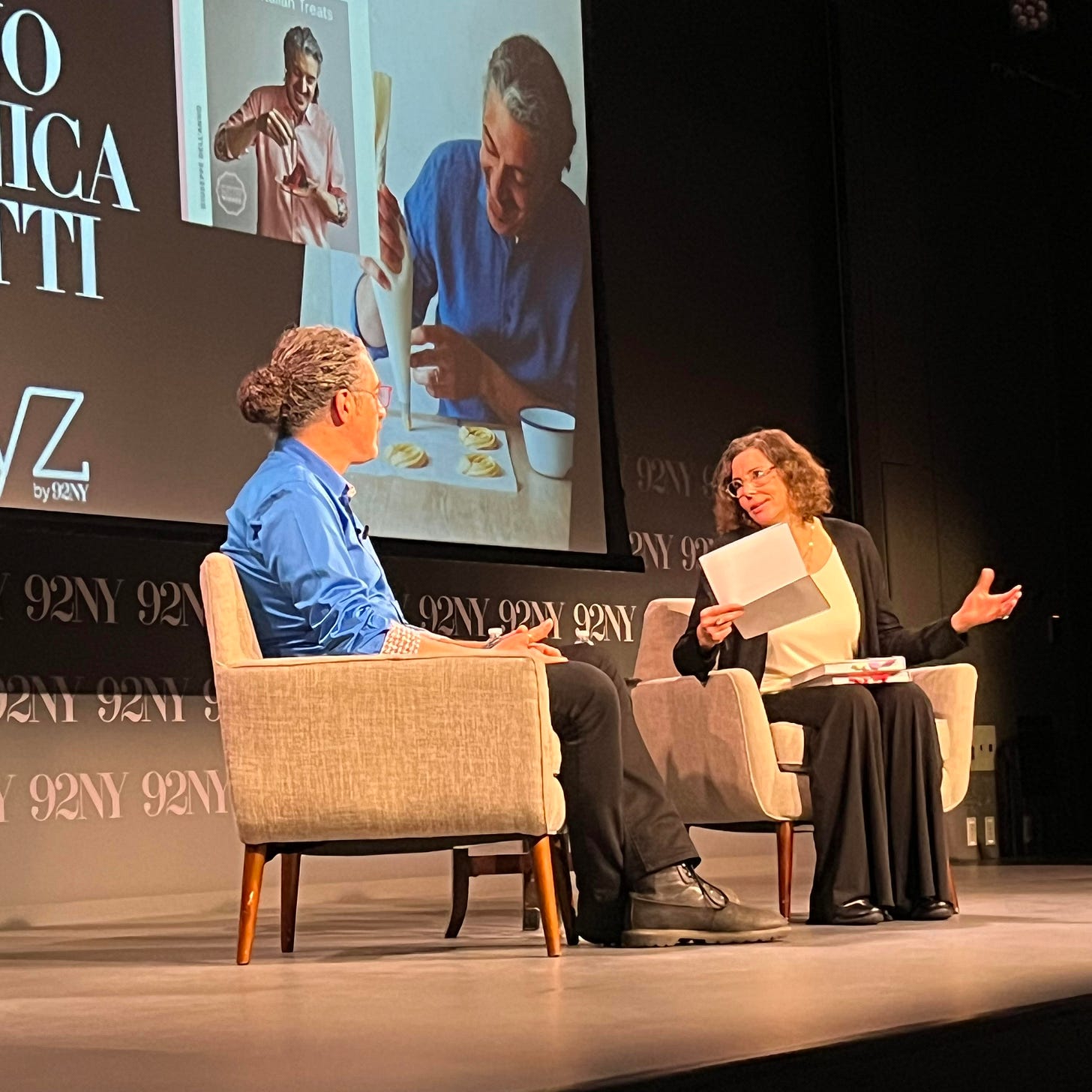
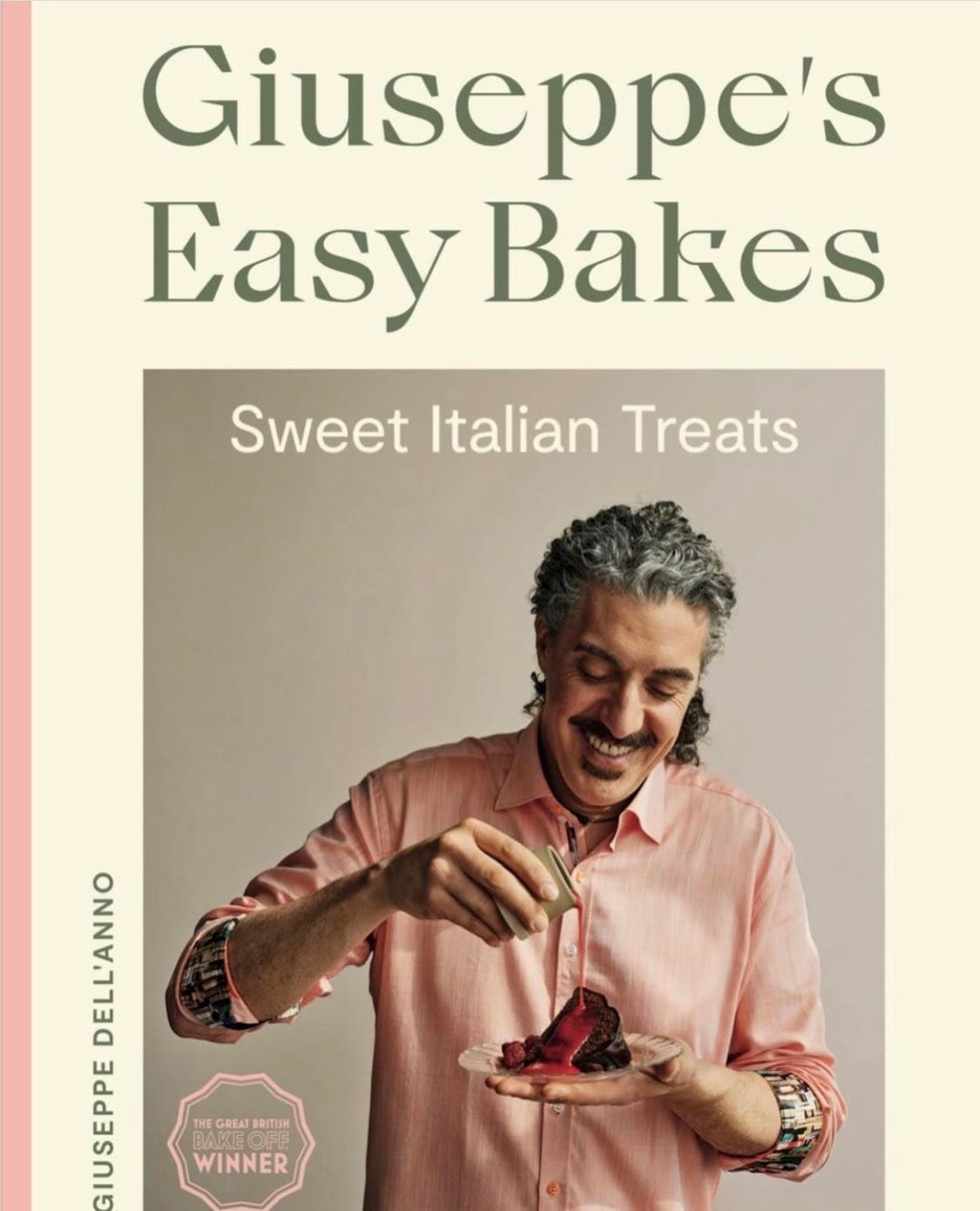
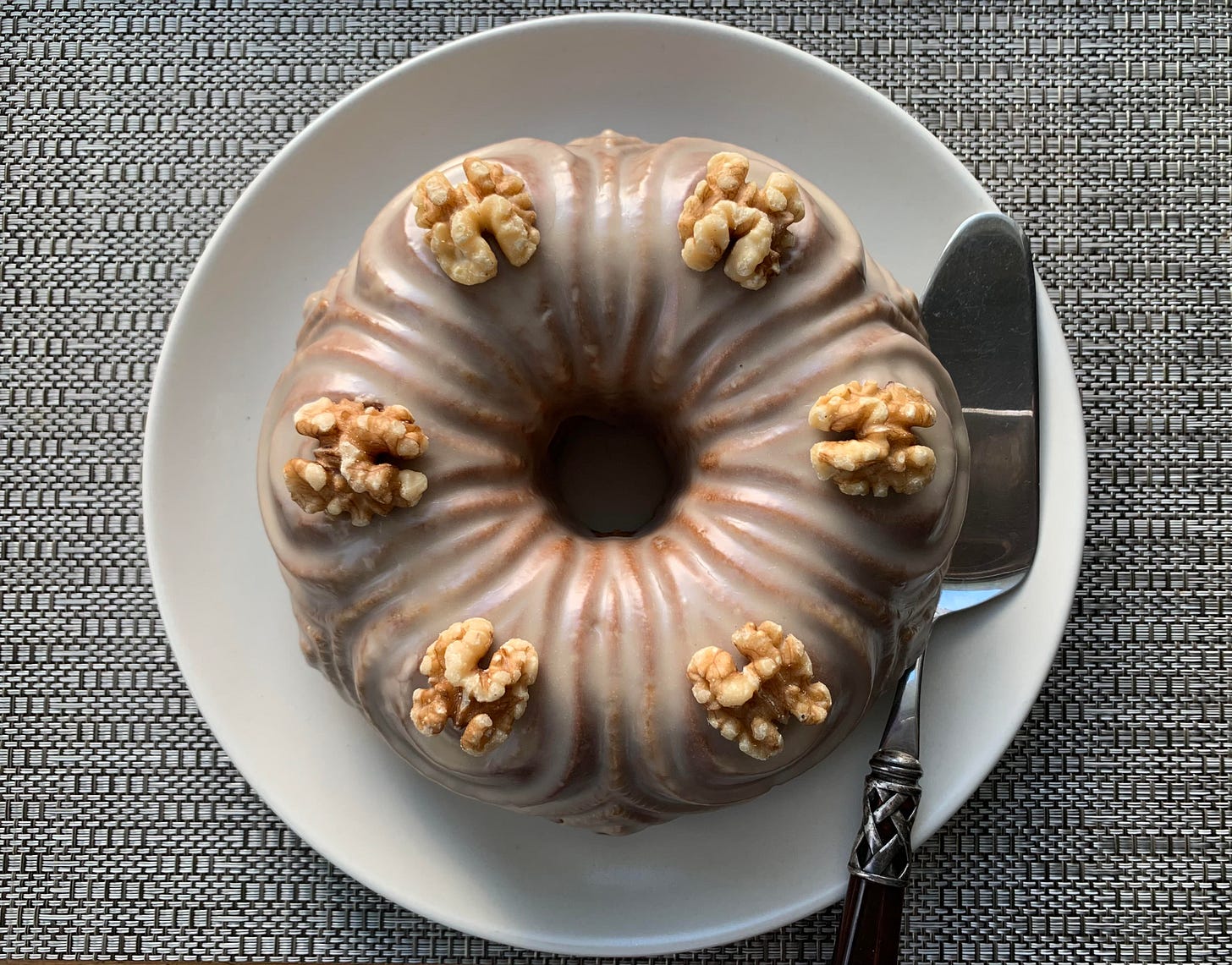
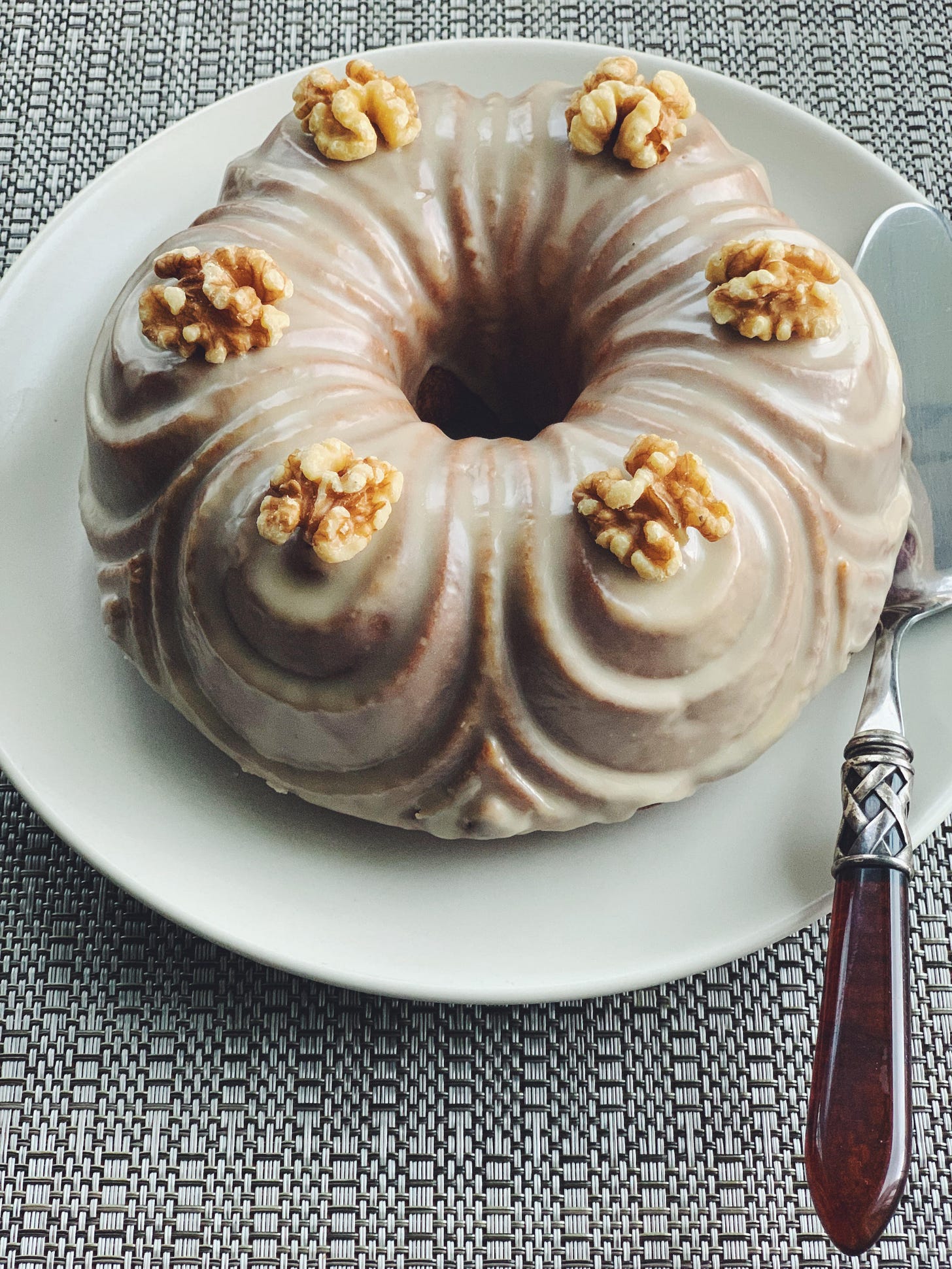
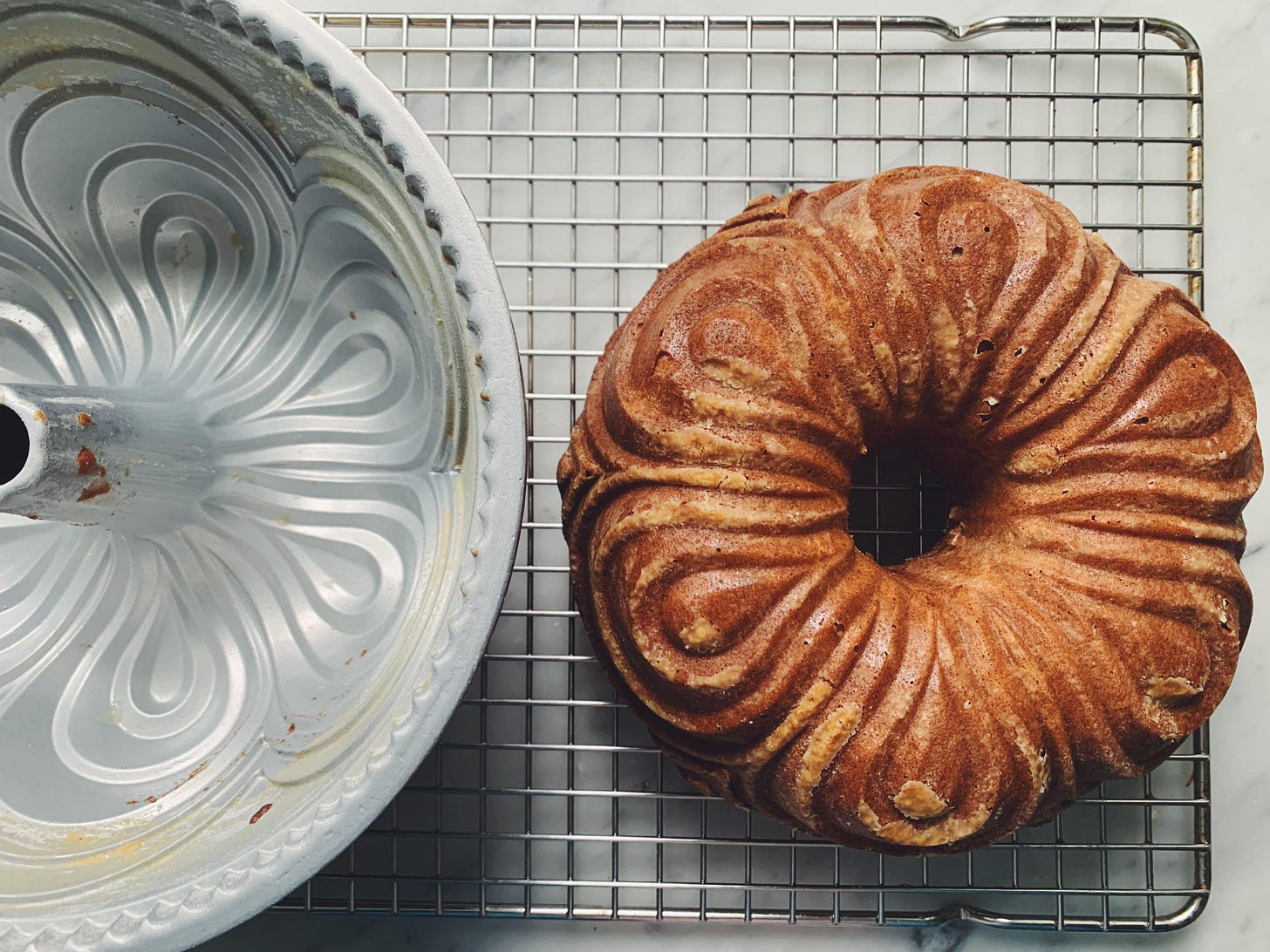
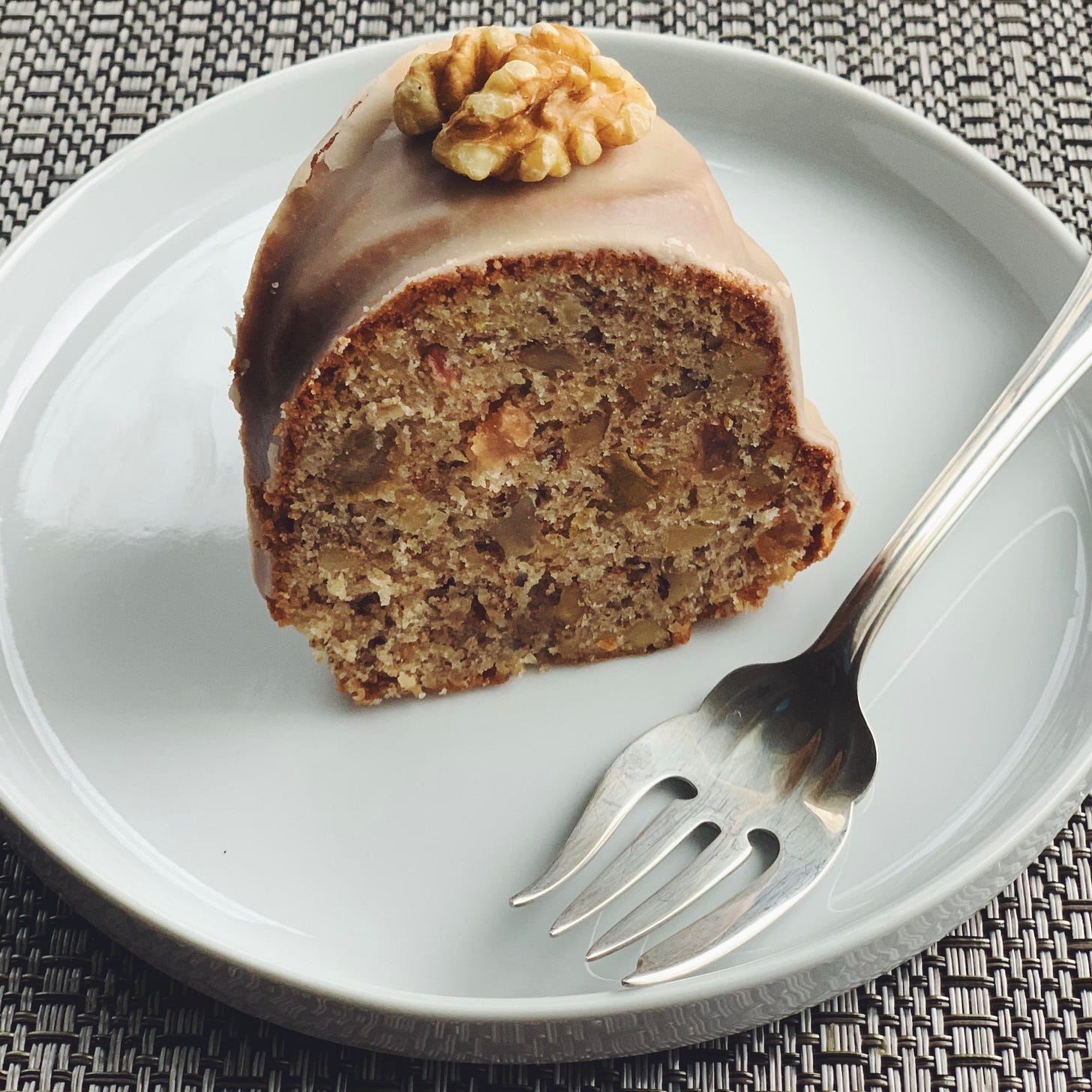
PS My favorite Italian pastry are pasticiotti which are double-crusted individual tarts filled with ricotta or with chocolate or vanilla custard. They're made in small brioche molds using pasta frolla dough. I remember them from the pastry shops in the south end of Hartford, CT. But it's nearly impossible to find them in the San Francisco Bay Area where I now live. We did find them in a few pastry shops in Puglia, but we didn't see any filled with ricotta, my favorite. I'm still working on a recipe for these delights. Buon Natale!
I just made pistachio amaretti (your recipe) and they were so much more delicious than I expected! New favorite.